We have all seen ladybugs crawling around in the garden but how do they get there do they have to walk everywhere or can they fly and how is that possible with their hard shells?
Do Ladybugs Fly? Yes, ladybugs can fly, flying up to 120 km @ 60 kph. They have two pairs of wings, the hind wings are responsible for flight. They extend to twice their body size and beat 85 times a second in flight. The hard-shelled elytra at the front don’t flap but lift away allowing the hind wings to operate.
Below we take a look at the anatomy of the ladybug with regards to flight, how their wings function, and exactly why they are so useful in the life of a ladybug. So, stick around to learn more.
The Anatomy Of A Ladybugs Wings
The ladybug’s wings are separated into two distinct pairs: the colorful Elytron (elytra for multiple) and the transparent hind wings.
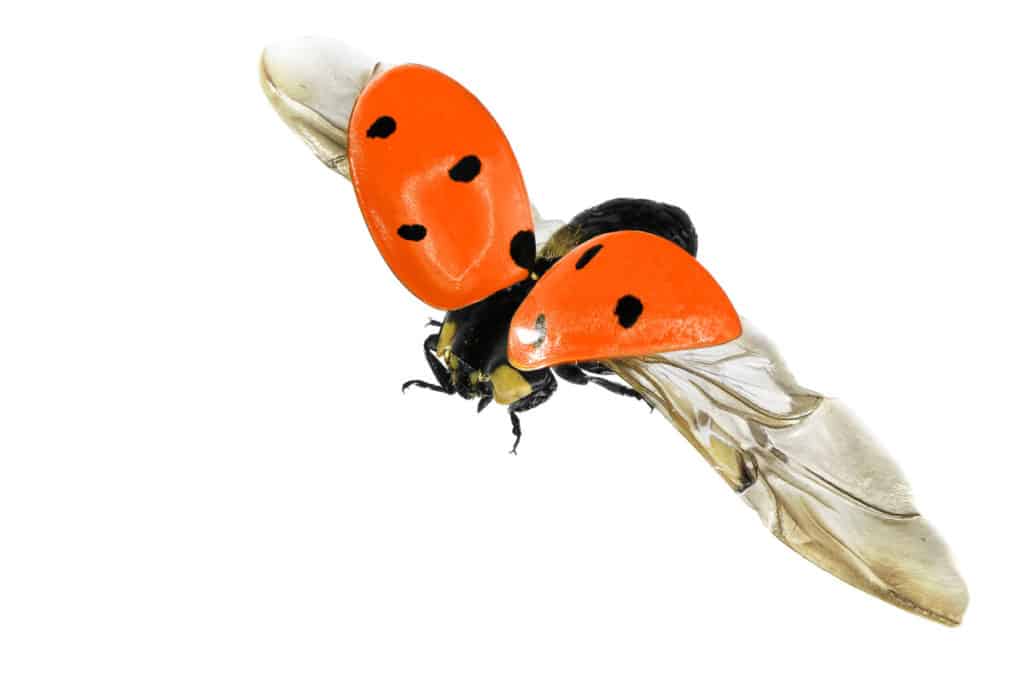
When the ladybug is ready to take off, it opens up its elytra and unfolds its hind wings, expanding them to twice its body size.
Ladybug Elytra
The elytra are also described as the outer wings of a ladybug. Even though they are moveable the elytra do not aid the beetle in flight. This hard outer shell can be found on most flying beetles and is what sets them apart from other insects.
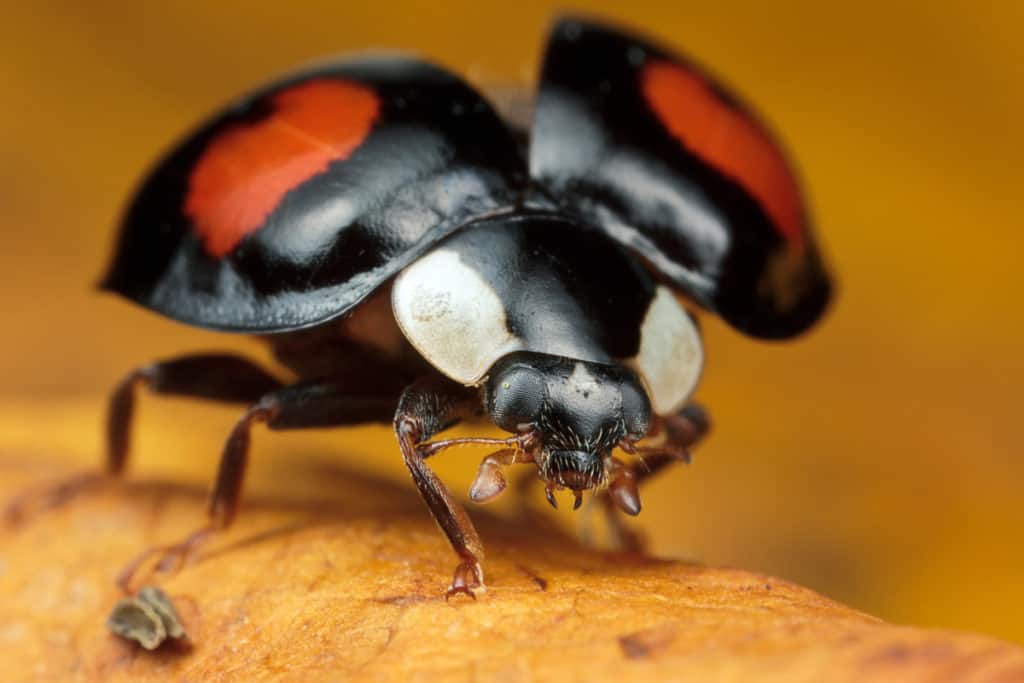
The functionality of the elytra is to protect the delicate membranous hind wings of the ladybug as well as create a defense against predators.
The elytra of a ladybug display vibrant colors and patterns which makes the ladybird recognizable and loved. As it is with butterflies, these elytra are identical mirror images when the left and right are compared.
For a full rundown of all the colors that ladybugs come in check out our article, Ladybug Colors: Your complete Guide.
The Hind Wings Of Ladybugs
Beneath the elytra, there is a pair of firm, membranous wings that allow the ladybug to fly. These wings are sometimes referred to as gossamer wings, which simply means light, thin or delicate wings.
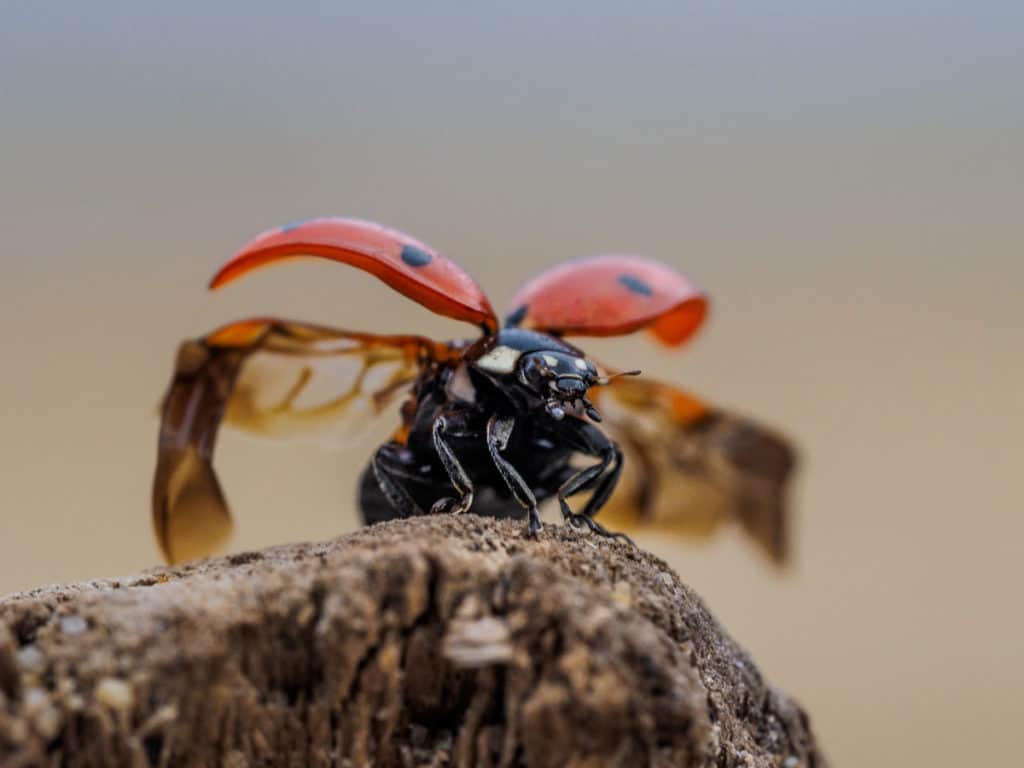
They are folded in an intricate way that has confused researchers for years, as they are firm enough to maintain flight, yet soft enough to fold into various shapes.
How Do Ladybugs Fold Their Wings?
When looking at the hind wings of a ladybug, scientists assumed that the folding of these appendages was related to the crease lines found throughout the wing. It was long thought that this was somewhat like the folding of a piece of paper when creating origami art.
However, because the ladybug closes its elytra before fully folding its wings into the dormant position, there was no way of knowing how this was done.
It was later found by Japanese researchers, who replaced an elytron on a ladybug with a transparent prototype that it was discovered.
When the ladybug pulls in its hind wings, they are dragged along the inner edges of the elytra which are shaped to fit the curve of the hind wings veins.
As the wings rub against the hard outer wing, the wings are bent at the creases and tucked away.
Why Do Ladybugs Fly?
Ladybugs use their ability to fly for multiple reasons which include the search for food, hibernation, mating, and protection from predators.
Ladybugs Fly In Search Of Food
Most species of ladybug are omnivores, feeding on plant material and aphids as their chosen diet.
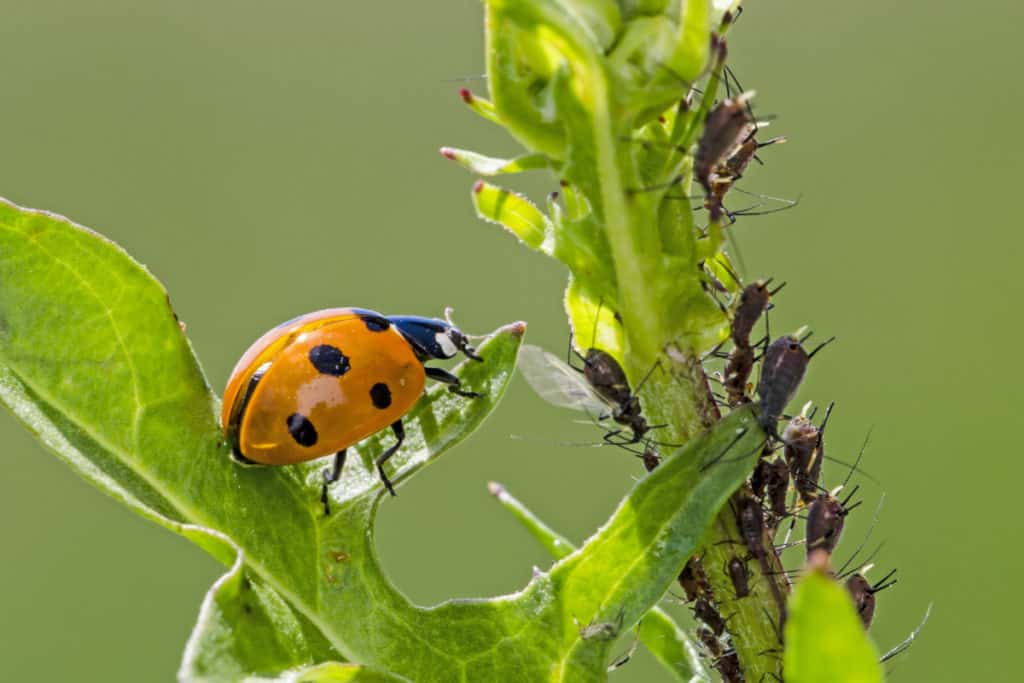
However, these wise beetles have a good sense of food density and work to avoid destroying the population of their favorite snack.
If a food source, such as aphids begins to drop, the ladybug will turn to other food sources such as some fruits, as well as other alternative food sources until the aphid population returns. For a full list of what ladybugs will eat check out this article we have written, What Do Ladybugs Eat?
This is the last resort and it is likely that they will take flight in order to find a better feeding area.
Although this can sometimes be kilometers away, ladybugs also use their wings to move from plant to plant, flying multiple times a day to efficiently move between aphid nests.
One example of this was in California, where a group of lady beetles formed an 80 mile by 80 mile swarm as they moved in search of aphids.
Ladybug Fly For Hibernation
Ladybugs do not migrate during winter. Instead, they go through a half hibernation (deep hibernation if temperatures reach below freezing).
The ability to fly allows these little bugs to join together in the same place to survive the cold. During the cold season, ladybeetles congregate together sometimes inside your home or in cracks in logs and concrete.
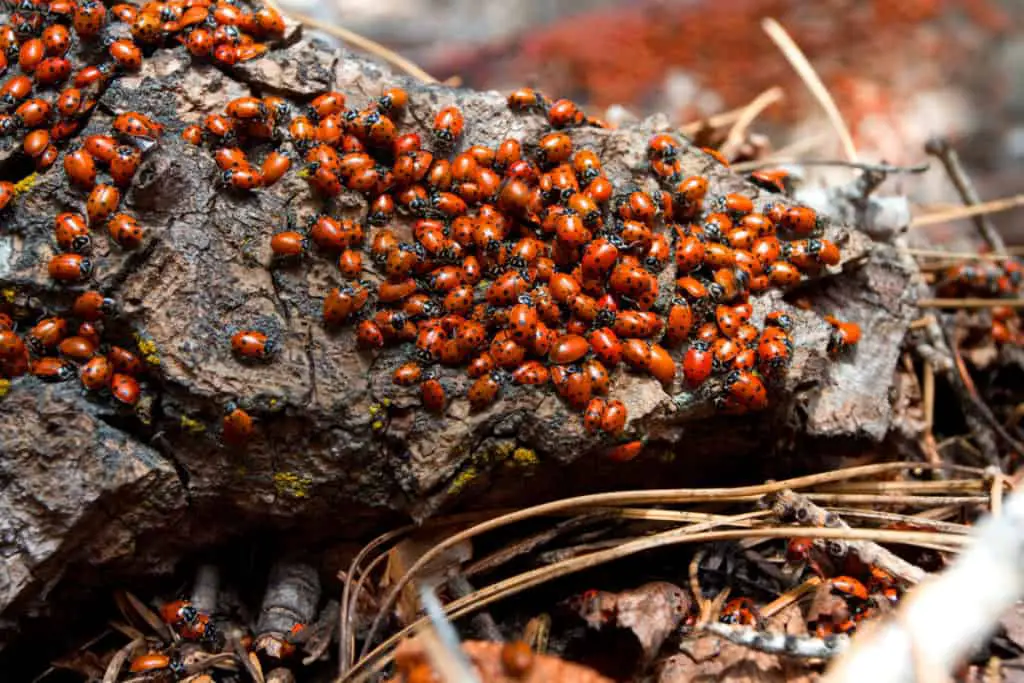
In places such as California as the temperature drops, these beetles take to the sky, are swept up by the winds, and are carried off to the mountains where they huddle together to keep warm.
We do have a whole article on the ladybug’s sleeping and hibernation habits. The article we have written is called, Do Ladybugs Sleep?
Ladybug Flight Helps With Mating
The ability to fly not only increases the ladybug’s chances of survival during winter but the congregations that they form serve a purpose for reproduction.
As the winter fades away and the temperatures rise, the lady beetles that survived the cold will begin to emerge and find a mate.
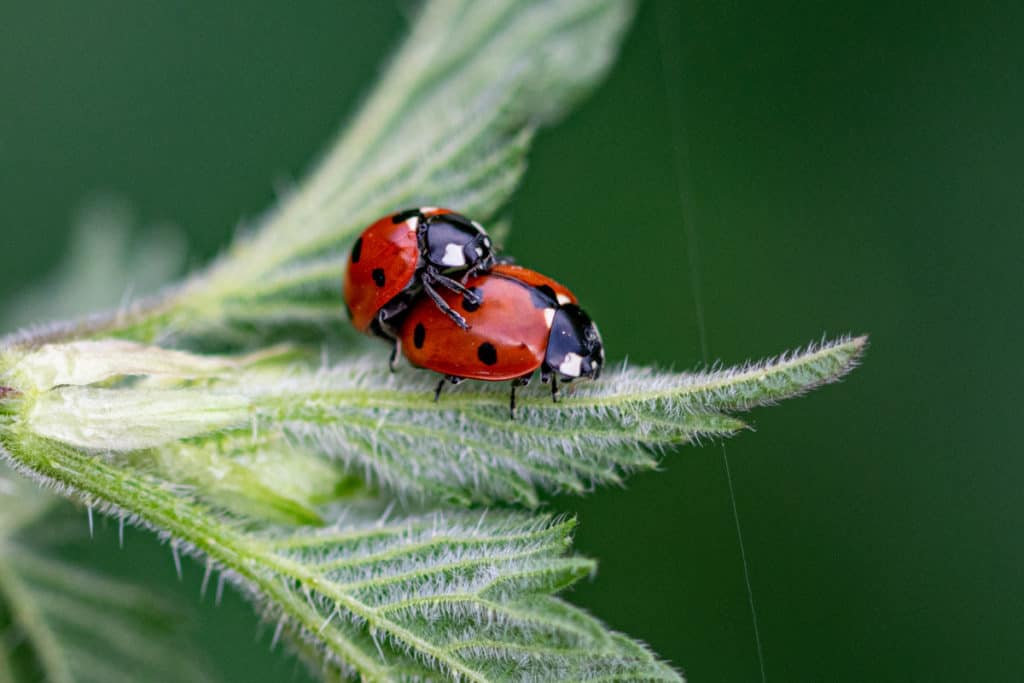
As they were able to fly to the same area during the previous fall, they do not need to look far in order to carry on their genes.
Ladybug Fly For Protection Against Predators
Although a ladybug’s defense against predators comes mainly from their colors and toxic reflex blood that they release from their hind legs, the ability of flight also plays a role.
Ladybugs do not seem to have good direction when they fly. This is partly because the eyesight of ladybugs is not that great. Birds are one of their main predators so flight does not help them much in fact they are more vulnerable to birds when flying.
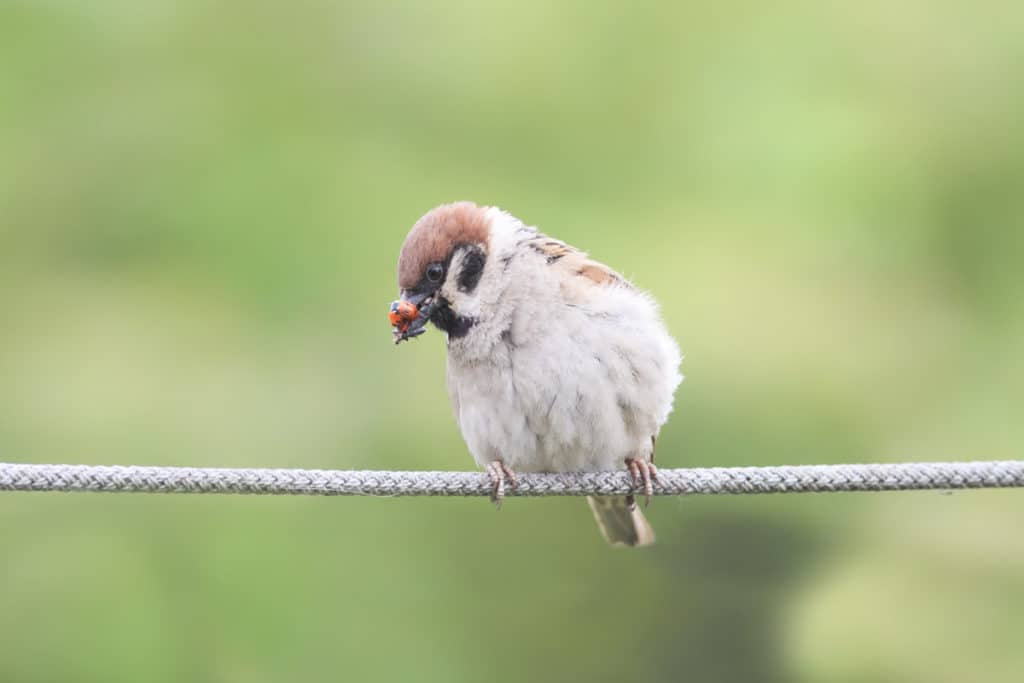
However, the ability to stay airborne can assist in the escape from land-dwelling predators such as lizards and toads.
How Far Can Ladybugs Fly?
In most cases, ladybugs will not fly for more than a few minutes at a time. Their flight time depends on the terrain that they are flying over and what scents they “smell” when passing.
Some factors will include the scent of aphids or other prey, as well as the scents of other ladybugs.
It was believed that the average flight distance for a ladybug was approximately 7 feet, however, one study concluded that some ladybugs travel 18km in a single flight when at low altitudes, and up to 120km when flying higher up.
How Fast Can A Ladybug Fly?
The same study looked primarily at the average altitude of the Coccinella septempunctata and invasive Harmonia axyridis, which are the most abundant species of ladybugs in the UK.
The study found that the average speed of a ladybug was 30km/h but some reached up to 60km/h. This is the same speed that an average racehorse can run.
How High Can Ladybugs Fly?
So how high can ladybugs actually fly? these species were recorded in altitudes up to 1100 meters above sea level.
The above graph shows the average distribution of ladybug density and altitude.
As the graph shows, the majority of beetles were found at 150 meters while a few were seen at 1118 meters above sea level.
How Fast Can Ladybugs Beat Their Wings?
Ladybugs have a unique way of taking off, and when observed in slow motion it seems as though they need to beat their wings on the spot for a while in order to get them warmed up.
However, to the naked eye, this takes place in less than a second.
Ladybugs beat their wings 85 times per second, which is faster than a hummingbird but not as fast as the honey bee.
Ladybug Flight Vs Other Animals
| Species | How far can they fly | How fast can they fly | How high above sea level | Wingbeats/ second |
| Ladybugs | 120 km per flight | 60 km/h | 1100 meters | 85 |
| Honey bee | 10 km per flight | 32 km/h | More than 1000 meters | 230 |
| Butterfly | 80 – 160 km per day | 60 km/h | 3300 meters | 12 |
| Hummingbird | 37 km per day | 50 – 100 km/h | 4000 meters | 80 |
Will A Ladybug Die If It Loses Its Wings?
A ladybug relies heavily on its wings for daily maneuverability. If the wings of a ladybug are removed by a predator or a human, the ladybug will not instantly die.
However, ladybugs need their wings in order to find food and congregate during winter, it is not likely that they will survive for long. The front wings, the colorful elytra also provide protection from predators, so the chance of being eaten is also high.
In the case that food is abundant in the immediate vicinity, the beetle may survive until winter, however, as the months get colder, unless the beetle has a warm spot to climb into, it will likely not make it through to the following spring.
The Wrap Up
Ladybugs have wings and use them throughout their lives (except as larvae) in order to find food, migrate, and protect themselves from prey.
These little beetles can fly incredible distances at high speeds, and therefore rely heavily on the functionality of both their elytra and hind wings.
While lady beetles tend to fly short distances throughout each day, when it is needed, they are capable of flying hundreds of kilometers.
Sources
https://journals.plos.org/plosone/article?id=10.1371/journal.pone.0082278
https://www.nps.gov/pinn/learn/nature/ladybugs.htm
https://www.reuters.com/article/us-california-ladybugs-idUSKCN1T72Y8
https://phys.org/news/2017-05-unfolding-mechanism-ladybug-wings.html
